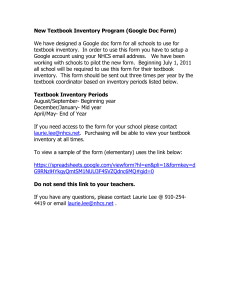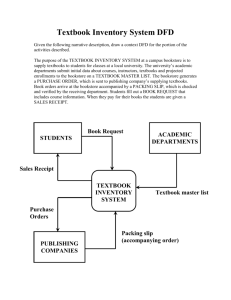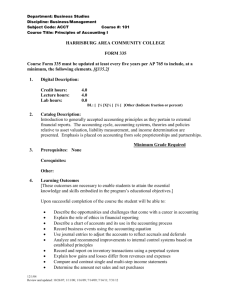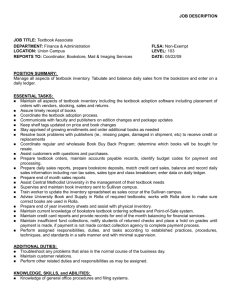"Double-Entry" Journal
advertisement
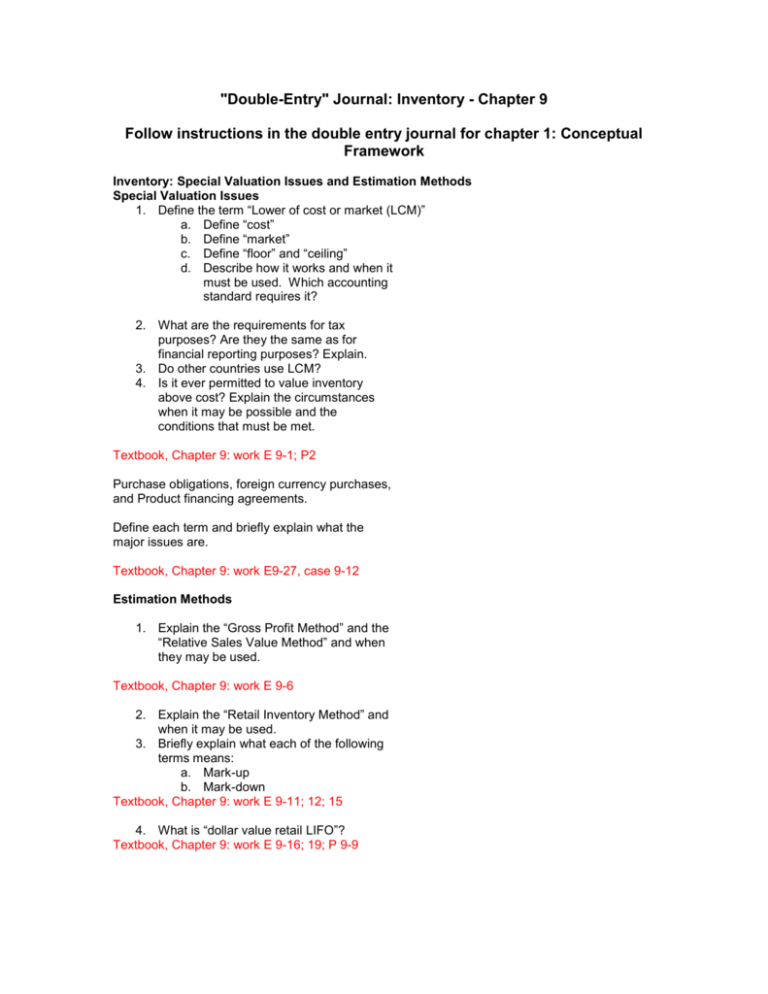
"Double-Entry" Journal: Inventory - Chapter 9 Follow instructions in the double entry journal for chapter 1: Conceptual Framework Inventory: Special Valuation Issues and Estimation Methods Special Valuation Issues 1. Define the term “Lower of cost or market (LCM)” a. Define “cost” b. Define “market” c. Define “floor” and “ceiling” d. Describe how it works and when it must be used. Which accounting standard requires it? 2. What are the requirements for tax purposes? Are they the same as for financial reporting purposes? Explain. 3. Do other countries use LCM? 4. Is it ever permitted to value inventory above cost? Explain the circumstances when it may be possible and the conditions that must be met. Textbook, Chapter 9: work E 9-1; P2 Purchase obligations, foreign currency purchases, and Product financing agreements. Define each term and briefly explain what the major issues are. Textbook, Chapter 9: work E9-27, case 9-12 Estimation Methods 1. Explain the “Gross Profit Method” and the “Relative Sales Value Method” and when they may be used. Textbook, Chapter 9: work E 9-6 2. Explain the “Retail Inventory Method” and when it may be used. 3. Briefly explain what each of the following terms means: a. Mark-up b. Mark-down Textbook, Chapter 9: work E 9-11; 12; 15 4. What is “dollar value retail LIFO”? Textbook, Chapter 9: work E 9-16; 19; P 9-9 Inventory Errors: What are some special issues to consider when inventory errors arise? Explain. Discuss error correction of inventory errors. Textbook, Chapter 9: work P 9-13; 15; case 9-11 Work Multiple Choice Questions (pp 464-465)
